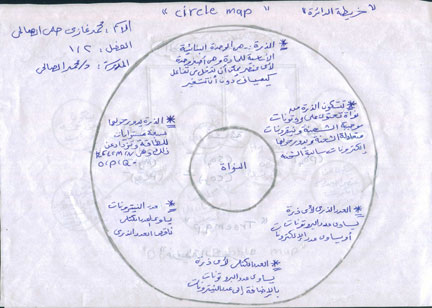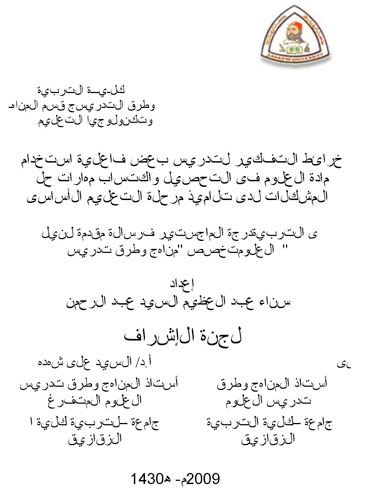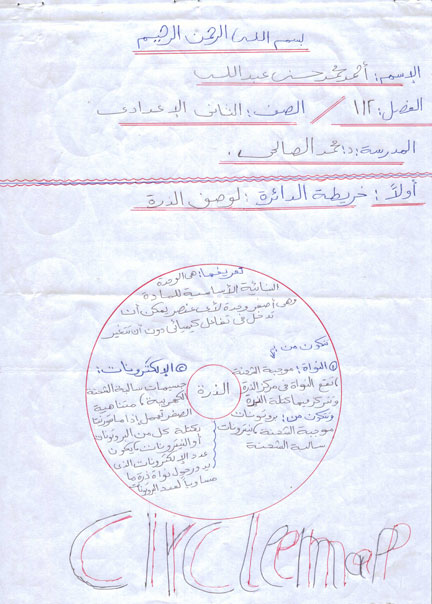


Video part of the thesis submitted by Sanaa Abd El Azeem Elsayed Abd El Rahman
Video part of the thesis submitted by Sanaa Abd El Azeem Elsayed Abd El Rahman
Video part of the Thesis Submitted by Sanaa Abd El Azeem Elsayed Abd El Rahman
Video part of the thesis submitted by Sanaa Abd El Azeem Elsayed Abd El Rahman
Video part of the thesis submitted by Sanaa Abd El Azeem Elsayed Abd El Rahman
| Egypt Thinking Maps Research |
The Effect Of Using Thinking Maps Strategy To Improve Science Processes In Science Course On Female Students Of The Ninth Grade
Download the complete research paper (pdf file)
Science Journal of Education, 2014
Salah A. Al-naqa - Associate Professor of Science Teaching Methods, the Islamic University of Gaza
Mohammed F. Abu-Owda - Assistant Professor of e-Learning and science, the Islamic University of Gaza
Abstract: The study aimed to uncover the effect of using thinking maps strategy in the improvement of science processes in science course among Female Students of the Ninth Grade. To achieve the study objectives, the researchers used both of the experimental and descriptive curriculum. They also built a scale of science processes. The study has been applied on a sample of 40 female students from the ninth grade in Khanyounis school for females which are divided into (EG=20) and (CG=20) students. After the implementation the study discovered the existence effective impact to use thinking maps strategy to improve science processes of the female students of the experimental group.
Keywords: Thinking Maps Strategy, Science Processes, Classification Process, Conclusion Process, Observation Process
Download the complete research paper (pdf file)
The Impact of Thinking Maps Instruction on Tourism
and Hotels Students' Reading Comprehension
Dr. Taher Mohammad Al-Hadi - Lecturer of Curriculum and Instruction (TEFL)
Faculty of Education, Ismailia Suez Canal University 2009
Download the complete research paper (pdf file)
Abstract: The current research aimed primarily to investigate the impact of Thinking Maps instruction on expository texts reading comprehension of Tourism & Hotels EFL sophomore students, Suez Canal University, N = 60 (exper. group = 30, control group = 30). The experimental / mapping group was explicitly taught expository reading materials using Thinking Maps-based instructional strategy. It comprised 5 Thinking Maps – the circle map, the bubble map, the tree map, the flow map, the multi-flow map - that correspond with and were thought to develop some reading comprehension skills: identifying the main ideas, deriving facts and details, giving characteristics, understanding sequencing, and identifying causes and effects. Data were collected by two tools administered: Thinking Maps Awareness (TMA) test and Reading Comprehension (RC) test. Having had the data analyzed statistically, results revealed that there were significant mean differences between the mapping group and the non mapping group in favor of the first. This stresses that Thinking Maps instruction had a positive direct impact on raising the mapping group's awareness of Thinking Maps as well as on developing their reading comprehension. Besides, it had a large effect size on those two aspects. That strategy makes Thinking Maps instruction more practical for EFL instructors who teach expository texts and thus may contribute to further studies for developing other language skills and some global skills such as study skills, summarization and note-taking skills.
Download the complete research paper (pdf file)
Using Thinking Maps for Developing Some English Writing
Skills of Secondary School Students
Rashad Fath'allah Abdel-Gawwad Al-Alfi 2012
Download the complete research paper (pdf file)
Summary: The purpose of this study was to determine the effectiveness of using Thinking Maps in developing some writing skills of EFL secondary school students. The study was limited to EFL secondary school students at Al-Baramun Secondary School, East Mansura Directorate, Dakahlyia Governorate, five subwriting skills and five thinking maps.
A random sample of 23 EFL secondary school students was drawn to be pre – post one group. The instruments of the study included one questionnaire (for EFL teachers to identify the difficulties facing students when writing , Prepost writing performance test to identify the effectiveness of (TMBP) on the performance of students in writing a composition, and a Thinking Maps Awareness Test.
The Thinking Maps Based Program (TMBP) was prepared by the researcher for the purpose of the study. The participants were given the pre post test on writing performance. The researcher and other raters marked these tests. Also, The researcher gave Thinking Maps Awareness ( TMA) to test students' comprehension for Thinking Maps and how they drew and use Thinking Maps in the process of writing.
Having obtained the data, the researcher analyzed them statistically using mean scores, Wilcoxon Rank Sum test , t- test for paired samples and effect size. Results were then reported and interpreted. The results indicated that writing skills of EFL secondary school students had been developed. In addition, the study revealed using Thinking Maps was effective in developing secondary school students' writing skills.
Download the complete research paper (pdf file)
The Effectiveness Of Using Some Thinking Maps In Teaching Science In Achievement and Acquisition Problem Solving Skills For Pupils Of Basic Education
Thesis Submitted by Sanaa Abd El Azeem Elsayed Abd El Rahman 2009
Zagazig University, Department Of Curricula and Methods Of Teaching
Supervised by Dr.Elsayed Ali Shoada and Dr.Fawzy Ahmed Elhabashy
Professors of Curricula and Methods of Teaching
Faculty Of Education Zagazig University
read the complete thesis — download the pdf file
Introduction: The third millennium is characterized by wonderful scientific and technological developments. These advances create challenges for us as well. In order to meet these challenges we need to encourage education approaches that emphasize critical thinking and problem-solving skills. One of the ways to address this educational need is through the use of learning tools called Thinking Maps.
read the complete thesis — download the pdf file
click on any of the Thinking Maps on this page to see a larger version
Research statement:
The following question identifies the research purpose:
How effective is the use of Thinking Maps to successfully develop problem solving skills in science education for second preparatory school students?
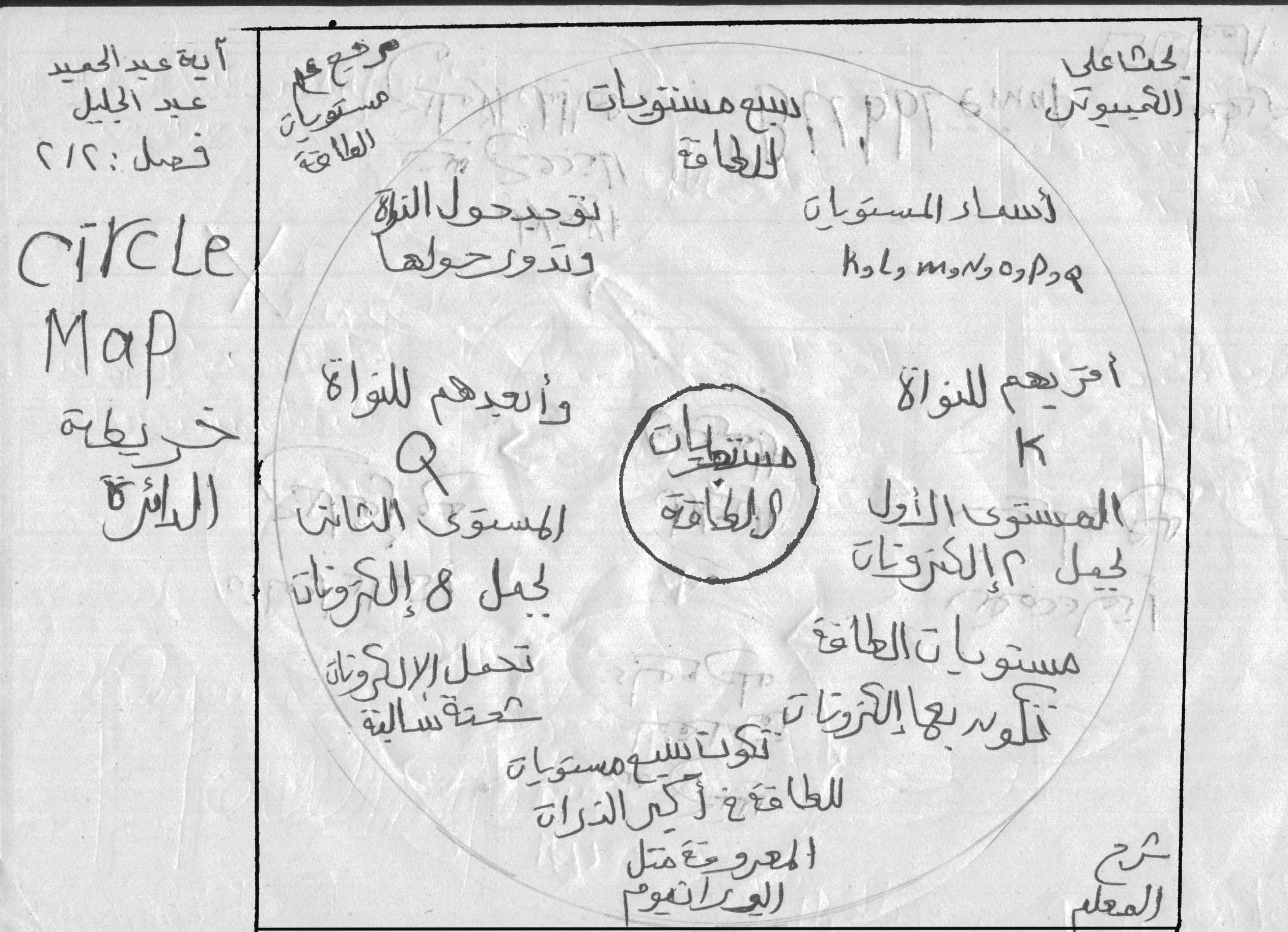 The main research question consists of
The main research question consists of
these three key questions:
- What is the effectiveness of using Thinking Maps in overall academic achievement in science education for second preparatory school students?
- What is the effectiveness of using some thinking maps in the acquisition of problem-solving skills in science education for second preparatory school students?
- Is there a significant relationship between achievement and the acquisition of problem-solving skills in science education for second preparatory school students?
- One science unit from the first book term of second preparatory school students in academic year 2007-2008
- Five problem solving skills addressed:
- Defining a problem
- Collecting data about a problem
- Developing a hypothesis
- Testing a hypothesis
- Documenting results
- Implementation of Thinking Maps: Circle Map, Bubble Map, Double Bubble Map, Tree Map, Flow Map, Brace Map
- Second preparatory school student population sample
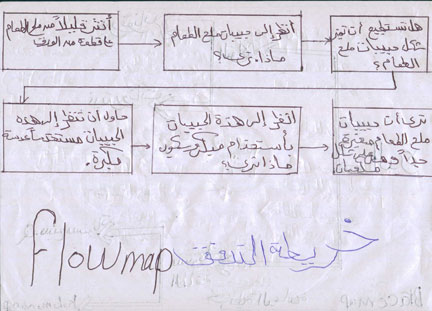 Research population sample:
Research population sample:
The research population consisted of students in the second year of preparatory school. The sample consisted of 150 students (age range 13-14 years) who were randomly selected from three preparatory schools in El Kanayat city (72 males, 78 females). The samples consisted of 75 students divided into experimental and control groups.
Research Tools:
- Achievement test
- Problem-solving skills test
Research Hypotheses:
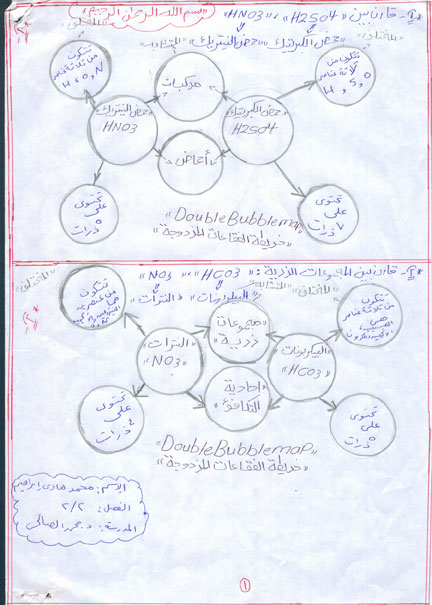 In the post achievement test, the experimental group’s scores show a higher academic performance than the control group’s scores (significant difference at the 0.05 level).
In the post achievement test, the experimental group’s scores show a higher academic performance than the control group’s scores (significant difference at the 0.05 level).
In the pre/post achievement test, the mean of the experimental group is higher than the mean of the control group (significant difference at the 0.05 level).
In the post problem solving skills test, the experimental group shows a higher academic performance than the control group (significant difference at the 0.05 level).
When comparing the mean of the experimental groups’ pre/post problem solving test, the experimental group’s mean is higher than the control group’s mean (a significant difference at the 0.05 level).
Research Goals:
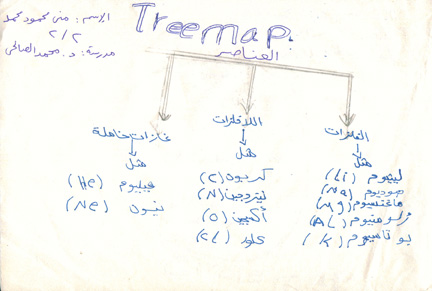 Determine the effectiveness of using Thinking Maps in science teaching and their impact on academic achievement of second preparatory school students
Determine the effectiveness of using Thinking Maps in science teaching and their impact on academic achievement of second preparatory school students- Determine the effectiveness of using Thinking Maps on the acquisition of problem solving skills in science education for second preparatory school students
- Determine the relationship between academic achievement and the acquisition of problem solving skills for second preparatory school students
- Introduce a teacher guide for science teachers of preparatory stage
- Introduce a student guide that will help second preparatory students to understand and implement Thinking Maps
- Introduce a test of problem solving skills that may function as a guide for other researchers in the areas of curricula and methods of science education
Research Results:
Statistical analysis using SPSS ver10 produced the following results:
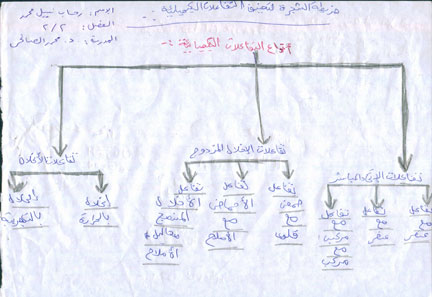 The mean of the experimental group’s post achievement test performance is higher than the mean of the control group’s performance (significant difference at level 0.01).
The mean of the experimental group’s post achievement test performance is higher than the mean of the control group’s performance (significant difference at level 0.01).- The mean of the experimental group’s score on the post achievement test is greater than the mean of the experimental group’s score on the pre achievement test (significant difference at the 0.01 level).
- The mean of the experimental group’s performance on the post problem solving skills test is higher than the control group’s performance (significant difference at the 0.01 level).
- The mean of the experimental group’s score on the post problem solving skills test was higher than the mean on the experimental group’s pre problem solving skills test (significant difference at the 0.01 level).
- There is a significant relationship between achievement and the acquisition of problem solving skills.
Research Recommendations:
- Science education should emphasize problem solving skills
- Effective science education includes the implementation of learning tools that are based on the research of the human brain (Thinking Maps).
- Best practices include providing students with the time and encouragement to problem solve in a variety of situations.
Suggestions:
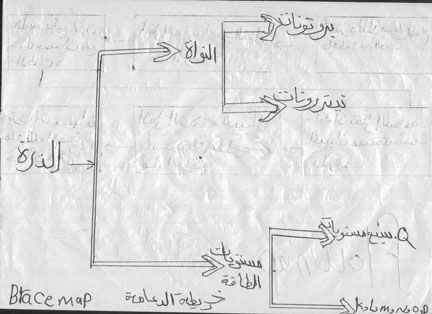 Study the effects of Thinking Maps in the development of scientific thought processes, creative thinking and other thinking skills
Study the effects of Thinking Maps in the development of scientific thought processes, creative thinking and other thinking skills- Conduct studies that implement Thinking Maps across a variety of content areas and grade levels
- Study the effects of other teaching and learning strategies that focus on improving problem solving skills
- Design studies that compare the effectiveness of Thinking Maps to the effectiveness of other visual tools (such as mind maps, fish maps, spider maps, advanced organizers) on the development of problem solving skills
Conclusion:
The experimental group of students used Thinking Maps to help them problem solve. These students’ scores were higher than the control group of students on the pre achievement test and the problem solving test. The statistical analysis of the results proved that Thinking Maps are powerful visual tools that improve students’ problem solving skills. Thinking Maps help second preparatory students to generate, organize, and compare ideas. In addition, Thinking Maps helped students discern key information that was needed to help them problem solve. Thinking Maps provided students a way to logically think through complex problems.
The statistical results indicate that the gender variable was insignificant in regards to the male and female performance on the tests. One can conclude from these results that this study shows that the academic abilities of second preparatory students are the same for both genders.
read the complete thesis — download the pdf file
click on any of the Thinking Maps on this page to see a larger version
